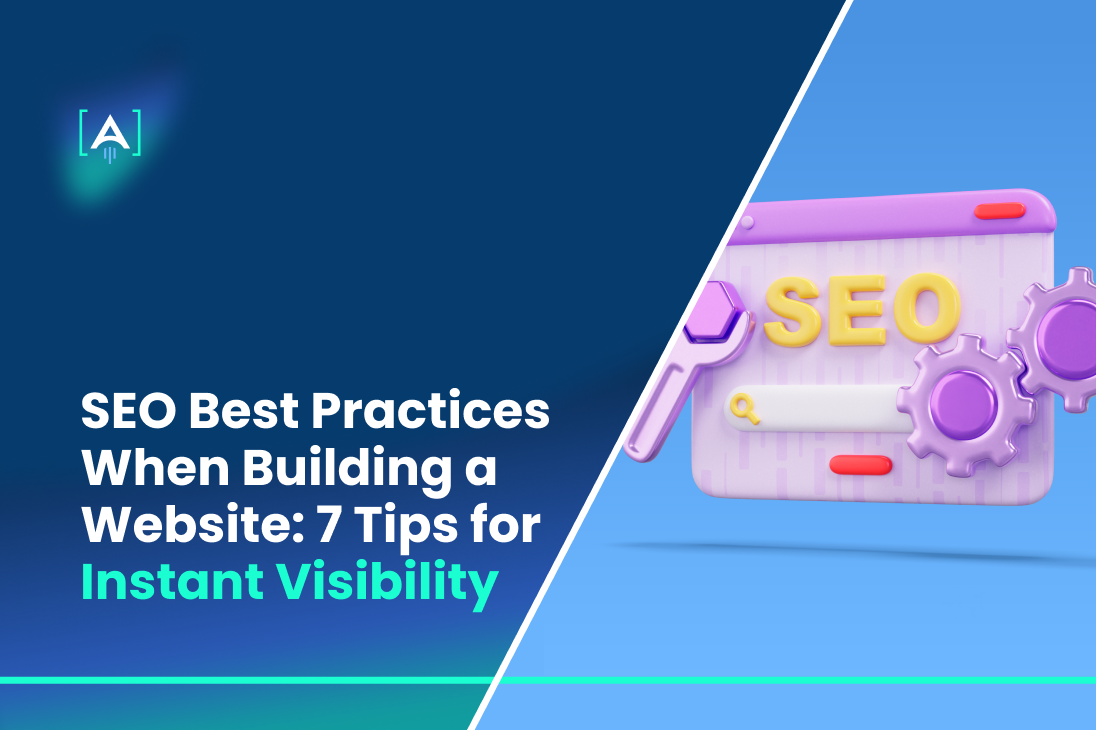Are you launching a new website and wondering how to stand out among the millions of search results?
Did you know that 75% of people never go past the first page of search engine results pages (SERPs)?
Moreover, according to a study by Backlinko, only 0.78% of Google searchers click on results from the second page.
This statistic highlights the importance of getting your website to rank on the first page of Google search results from the moment it goes live.
Implementing effective SEO when building a website is critical to achieving instant visibility and driving qualified traffic to your site.
As a business owner, partnering with a website building agency that understands the intricacies of SEO can be the difference between online success and getting lost in the digital abyss.
This guide will explain seven essential SEO best practices for helping your new website rank high on search engine results pages.
By following these tips, you’ll ensure your website is optimized and adjusted for search engines and offers a superior user experience, ultimately driving more conversions and sales for your business.
Let’s dive into these actionable strategies and set your website up for SEO success from the start.
1. Keyword Research and Integration
When it comes to SEO when building a website, keyword research is the base of any successful strategy.
Proper keyword research helps you know what your target audience is looking for and allows you to tailor your content to meet those search queries effectively.
Implementing the right keywords from the start will better your chances of appearing in relevant search engine results pages (SERPs) and bring more organic traffic to your website.
Importance of Keyword Research
Understanding your audience’s needs and behaviors is critical to creating a successful online presence.
For instance, if you are focused on ecommerce website design, identifying keywords like “how to create a brand identity” or “SEO best practices” can help you align your content with what potential customers are actively searching for.
Utilizing free tools like Google Keyword Planner, you can find high-traffic keywords relevant to your industry, helping you capture attention on Google’s search results and other search engines.
Effective Integration of Keywords
Once you have identified the target keywords, it’s necessary to integrate them naturally into your content.
Avoid keyword stuffing, which can cause penalties and a poor user experience.
Instead, focus on incorporating keywords into key elements of your web pages:
- Title tags: Place your primary keyword at the beginning of your page title to emphasize its importance to both search engines and users.
- Meta descriptions: Craft compelling meta descriptions that include your main keywords to entice users to click on your search results.
- Header tags (H1, H2, H3): Use header tags to adjust your content and include relevant keywords to enhance readability and on-page SEO.
- Content: Naturally insert your keywords into the content to maintain readability while optimizing for search engine optimization.
- Alt text for images: Use descriptive alt text that includes keywords, helping search engines understand your images and improve image SEO.
- Internal links: Link-related content using anchor text that contains your target keywords to boost website optimization and improve user navigation.
Leveraging Long-Tail Keywords
Long-tail keywords are specific phrases that people type into search engines.
Those usually have lower search volume but higher intent, making them highly valuable for conversions.
For example, instead of targeting “web design,” you could use a more specific keyword like “custom website development for ecommerce businesses” to attract a more targeted audience.
Source: SemRush(Keyword searches in Google)
This approach enhances your site’s relevance in search engine rankings and helps you attract visitors who are more likely to convert.
Monitoring and Adjusting Keyword Strategy
Using tools like Google Search Console, check the performance of your keywords all the time.
Identify which terms are driving website traffic and adjust your content strategy accordingly.
This ongoing process ensures your website remains optimized for relevant keywords and continues to rank well in Google search results.
2. Optimize for Mobile-First Indexing
With mobile devices accounting for more than half of global internet traffic, optimizing for mobile-first indexing has become crucial for SEO when building a website.
Google now mostly uses the mobile version of a site’s content for indexing and ranking.
Making sure that your site provides a seamless experience for mobile users is essential for achieving high search engine rankings and driving significant website traffic.
Importance of Mobile-First Indexing
Mobile-first indexing means Google primarily uses the mobile version of your website for crawling, indexing, and ranking.
If your site is not optimized for mobile devices, you risk losing visibility in Google��’s search results, which can significantly impact your overall SEO efforts.
As more users access websites via smartphones and tablets, optimizing your site for mobile ensures that you cater to a broader audience and enhance the user experience across all devices.
Key Elements of Mobile Optimization
- Responsive Web Design: Ensure your website uses a responsive and flexible design that adjusts to different screen sizes and resolutions by itself. This approach not only improves the user experience but also helps search engines know and index your content more effectively.
- Fast Load Times: Mobile users expect fast-loading websites. Optimize your site’s page speed by compressing images, switching browser caching, and minifying CSS and JavaScript. Google PageSpeed Insights can help you identify areas for improvement.
- Optimized Images: Use high-quality images that are made for quick loading without compromising visual appeal. Be sure that your images have descriptive alt text to make them reachable to visually impaired users and improve image SEO.
- Touch-Friendly Navigation: Design your site’s navigation to be easily accessible with touch gestures. Make sure buttons and links are large enough to be tapped easily and spaced adequately to avoid accidental clicks. This not only improves user experience but also helps reduce bounce rates.
- Simplified Content: Display content that is easy to read on smaller screens. Use larger fonts and keep paragraphs concise to ensure readability. Proper use of header tags will help structure your content better for both users and search engine bots.
Testing and Monitoring Mobile Performance
Test your website’s mobile performance with tools like Google’s Mobile-Friendly Test and Google Search Console.
They can help you find issues that could affect your site’s mobile usability and offer insights on how to optimize further.
Monitoring the performance through these platforms will help you maintain a mobile-friendly site that ranks well in search engine results pages and enhances user engagement.

3. High-Quality Content Creation
In the world of SEO, when building a website, high-quality content plays a major role in leveling up your site’s visibility and ranking on search engine results pages (SERPs).
Content that is informative, engaging, and optimized for relevant keywords can attract more organic traffic, upgrade user experience, and establish your authority in your industry.
With the competitive nature of today’s digital landscape, creating content that stands out is more relevant than ever.
What Makes Content High-Quality?
High-quality content goes beyond being well-written; it provides valuable information that matches the needs and interests of your target audience.
For example, using unique data, case studies, or industry insights makes your content more engaging and trustworthy.
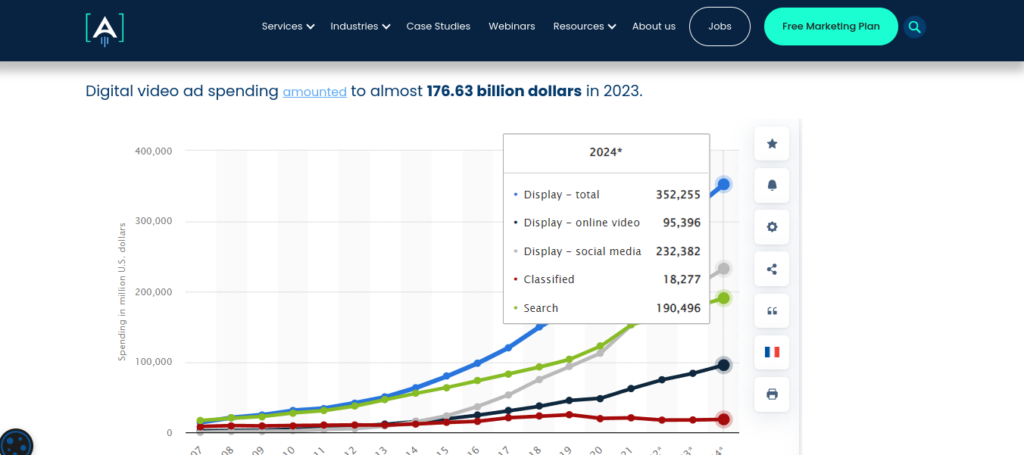
Source: Azarian Growth Agency blog
A blog post featuring original research about the latest trends in ecommerce website design can position your site as a go-to resource.
Relevance is another important factor.
Tailoring your content to specific needs, such as a detailed guide on “how to create a brand identity,” attracts users looking for expertise.
Depth is equally significant; content that explores various aspects of a topic, such as the benefits of custom website development or an explanation of headless CMS, helps establish authority and engages readers more effectively.
Using multimedia elements like video tutorials or interactive tools, such as a “Website SEO Health Check,” can further engage users, leading to longer time spent on your site and more shares.
Optimizing Content for SEO
Using your target keywords naturally and smoothly throughout the content is essential.
This includes using them in the title tags, meta descriptions, headings, and in the body of your text.
Instead of forcing keywords unnaturally, focus on seamless integration that enhances the readability and relevance of your content.
Internal linking to related articles or pages helps users navigate your site while distributing page authority, which is beneficial for your SEO.
Visual elements like high-quality images, infographics, and videos not only break up large blocks of text but also keep readers engaged.
For instance, embedding a video about product demonstrations within a blog post can significantly boost user interaction.
Make sure these visuals are optimized for quick loading and have descriptive alt text to support image SEO and accessibility.
Properly compressing images without losing quality will enhance page speed, an important factor for both user experience and search engine ranking.
Additionally, user-generated content (UGC), such as customer reviews or discussion forums, can add authentic value to your site.
Letting users share their experiences not only builds trust but also creates fresh content that enhances your site’s authority and SEO performance.
Long-form content like comprehensive guides or whitepapers on topics such as “SEO best practices” or “website optimization” can provide in-depth answers to user queries, making it more likely to perform well in search rankings.
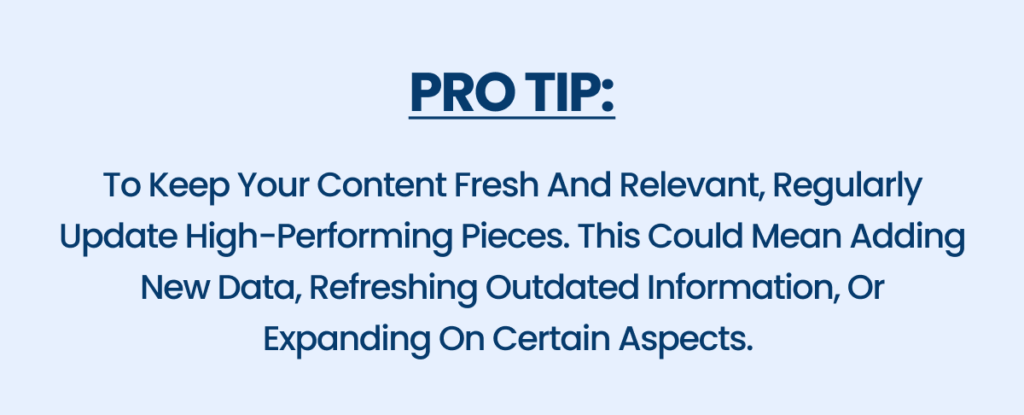
4. Technical SEO Setup
A strong technical foundation is vital for effective SEO when building a website.
Technical SEO makes sure that your site is smoothly crawled and indexed by search engines, which directly impacts your site’s performance on search engine results pages (SERPs).
A study by Backlinko found that the first page of Google results contains an average of 1,447 words, highlighting the importance of robust content and a solid technical setup.
Here are key elements to take into consideration when setting up your website’s technical SEO:
- Site Structure: A well-organized and thorough site structure helps search engine bots with indexing your site more effectively. Use a logical hierarchy with categories, subcategories, and internal links to make it easier and more accessible for users of search engines to navigate your site. A well-structured site is especially important for large sites like those involved in ecommerce website design.
- XML Sitemap: Create and submit an XML sitemap to Google Search Console. This file lists all the important pages of your website so that search engines discover and index your content more efficiently. An XML sitemap is a critical tool for ensuring that all relevant pages are indexed, especially those that may not be easily found through regular crawling.
- Robots.txt File: Use a robots.txt file to make search engines understand which pages should or should not be crawled. This file is crucial for preventing sensitive information from being indexed and helps to optimize website performance by limiting unnecessary crawling. Make sure it’s correctly configured to avoid blocking important sections of your site by mistake.
- Page Speed Optimization: Site speed is a known ranking factor for Google’s search results. Optimize your website’s speed by enabling browser caching, compressing files, minifying CSS and JavaScript, and using a content delivery network (CDN). Faster page loading times improve user experience and reduce bounce rates and improve search engine rankings.
- Mobile-Friendly Design: With more than half of web traffic coming from mobile devices, it’s necessary to make sure your website is mobile-friendly. Implement responsive design principles that automatically adjust your site’s layout based on the user’s device. Testing with tools like Google’s Mobile-Friendly Test can help you ensure your site meets mobile usability standards, which is crucial for ranking well on mobile search results.
- Secure HTTPS Protocol: Switch from HTTP to HTTPS to secure your website. HTTPS provides a safe connection for users and is also a ranking signal for Google. Websites using HTTPS are prioritized over those that do not, making it an essential part of your technical SEO setup.
- Canonical Tags: Use canonical tags to prevent issues with duplicate content. If you have kind of the same content across multiple pages, canonical tags tell search engines which version is the preferred one. This practice helps consolidate website traffic to a single version of a page and ensures that your site’s authority is not diluted.
- Structured Data: Implement structured data (Schema markup) to provide search engines with more insights about your content. This can boost your search listings with rich snippets, such as star ratings, product prices, and more, which can improve click-through rates from search engine results pages.
- 404 Error Monitoring: Regularly check for broken links and 404 errors that can negatively affect user experience and SEO. Use tools like Google Search Console to identify and fix these issues, ensuring all links on your site lead to active, relevant pages.
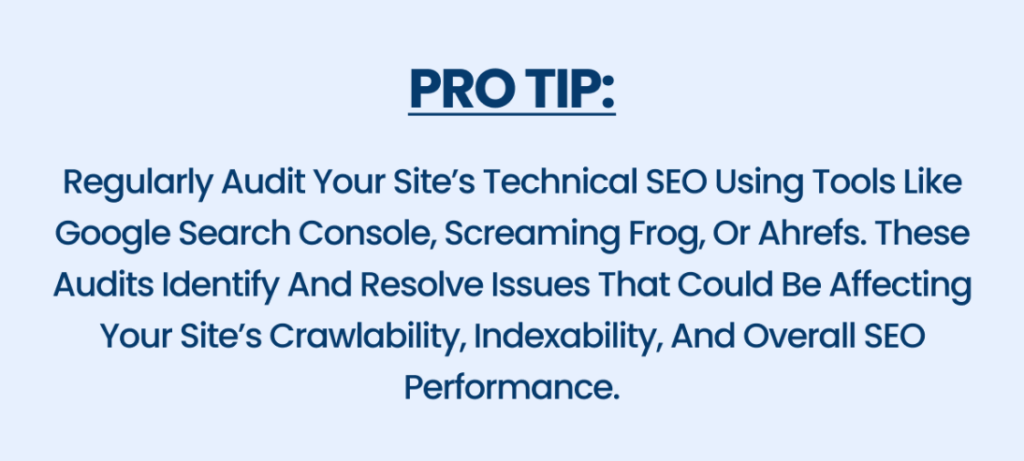
5. Fast Page Load Speeds
You may have already read about the importance of having a fast-loading website, but let’s dive deeper into why this matters for SEO when building a website.
Fast page load speeds enhance the user experience and directly influence your site’s performance on search engine results pages (SERPs).
Optimizing page speed helps reduce bounce rates, leading to better engagement and search engine rankings.
To optimize your site’s speed, focus on techniques like enabling browser caching to store files locally in users’ browsers, which speeds up subsequent visits.
Compressing and optimizing images is also crucial; large image files can slow down your site significantly, so use tools that reduce image size without changing quality and add descriptive alt text for accessibility.
Minimizing your site’s code—such as CSS, JavaScript, and HTML—by removing unnecessary characters and spaces will improve load times.
Additionally, utilizing a Content Delivery Network (CDN) will distribute your site’s content across multiple servers globally, ensuring faster access for users by reducing the distance data needs to travel.
6. User Experience (UX) Optimization
Providing a smooth and good user experience is vital for maintaining engagement and improving search engine rankings. Here are some best practices for UX optimization:
- Responsive Design: Ensure your website adjusts smoothly to different screen sizes, catering to both desktop and mobile users. This not only improves accessibility but also aligns with SEO best practices for mobile-first indexing.
- Easy Navigation: Design your site with a clear and logical navigation structure. Use intuitive menus and place important information where users expect to find it. This makes it easier for users to navigate and for search engine bots to crawl your pages.
- Readable Content: Use a clean layout with plenty of white space, legible fonts, and well-organized content. Break text with headings, bullet points, and visuals to make information easier to digest, which can keep users on your site longer.
- Clear Calls-to-Action (CTAs): Make sure your CTAs stand out and clearly guide users on what to do next, whether it’s making a purchase, signing up for a newsletter, or reaching your business. Effective CTAs can improve conversions and engagement.
- Accessibility: Incorporate features that enhance accessibility, such as alt text for images and keyboard-friendly navigation. This supports visually impaired users and improves your site’s overall usability and aligns with SEO web design practices.
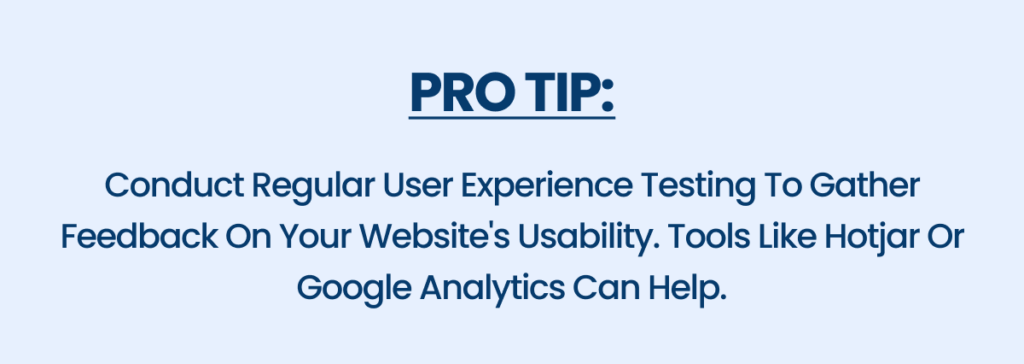
7. Quality Backlink Acquisition
Acquiring high-quality backlinks is a major factor in enhancing your site’s authority and improving its ranking in Google search results.
Backlinks from reputable websites send signals to search engines that your content is valuable and authoritative, which can boost your site’s position on the search engine results pages (SERPs).
To build a robust backlink profile, focus on creating valuable, shareable content that organically attracts links.
Publishing original research, insightful blog posts, and engaging multimedia like infographics and videos can encourage other websites to link back to your content.
Engaging in guest blogging on reputable industry sites is another effective strategy for getting quality backlinks.
Even when you are a blogger, you can write guest posts in travel blogs.
Source: Ameture Traveler
Reach out to industry influencers and websites with high domain authority to establish partnerships and earn backlinks that will enhance your website’s SEO.
Achieve Instant Visibility with [A] Growth Agency’s SEO Expertise
For businesses looking to maximize their website’s potential, partnering with a professional website building agency like [A] Growth Agency can make a significant difference.
Our team experts know the nuances of SEO when building a website, whether for ecommerce website design, custom website development, or integrating a content management system (CMS).
We provide tailored solutions to help you achieve your business goals and ensure your website is set up for success from the start.
With [A] Growth Agency, you get more than just a service provider; you gain a partner dedicated to your growth and success.
Let us help you transform your website into a powerful tool for driving traffic & visitors and converting leads.
Contact us today to learn how we can elevate your SEO strategy and help you dominate the search engine results pages.
